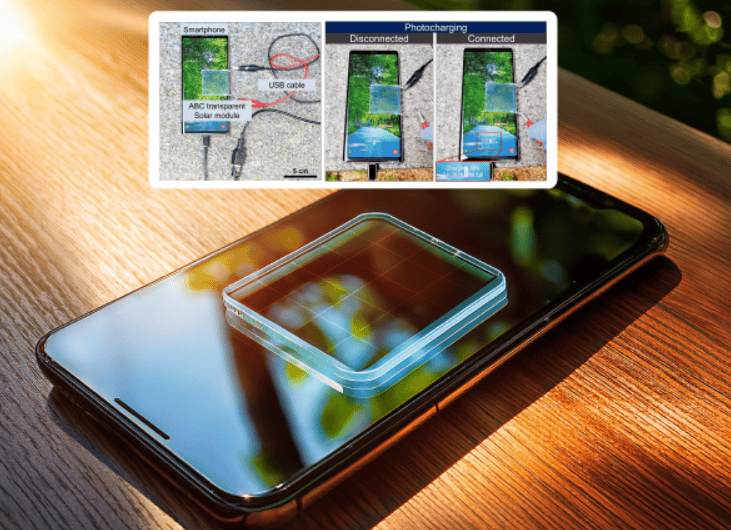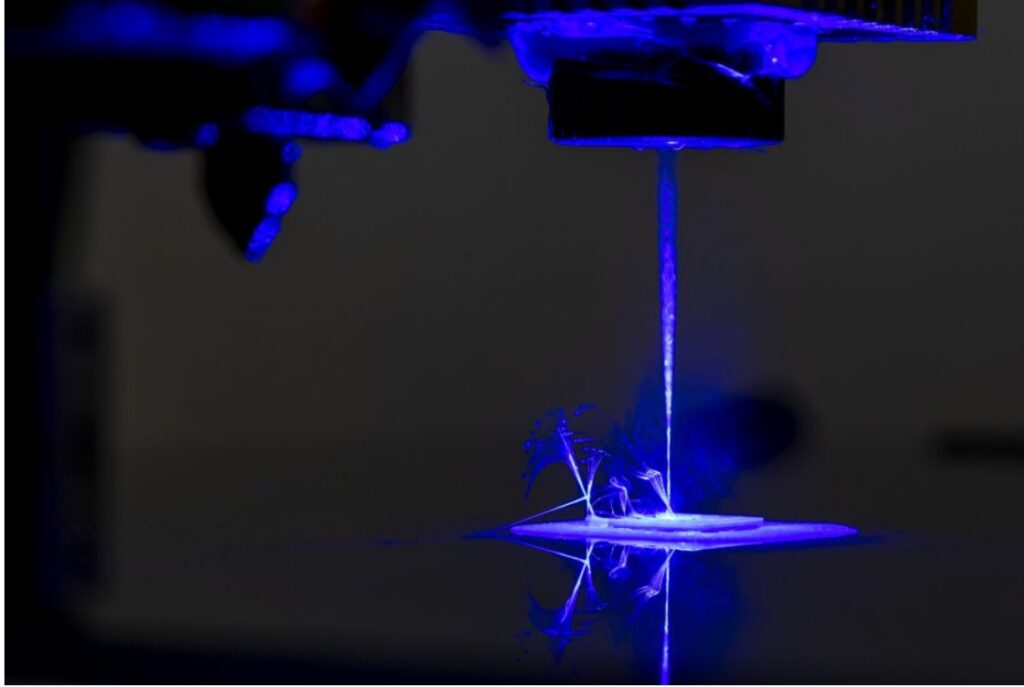Researchers at the Ulsan National Institute of Science and Technology (UNIST) in South Korea have developed a groundbreaking technology that allows smartphone batteries to be charged using transparent solar cells attached to the screen. This innovation could eliminate the need for bulky external battery packs, as phones could be charged simply using sunlight or indoor lighting.
The Technology
The research team, led by Professor Kwanyong Seo from the School of Energy and Chemical Engineering, has developed highly efficient and transparent solar cell modules. They used an “all-back-contact” (ABC) design that places all solar cell components on the rear side, maintaining a colorless, transparent appearance.
According to the study’s abstract published in the Proceedings of the National Academy of Sciences (PNAS):
“We explored a custom-designed, all-back-contact (ABC) configuration, which situates all electrical contacts on the rear side, to create glass-like transparent crystalline silicon (c-Si) solar cells and seamless modules. The ABC design not only demonstrates high power conversion efficiency (PCE) in solar cells but also ensures unobstructed visibility through transparent solar modules.”
The team also developed a “seamless modularization” technology that eliminates gaps between devices and avoids the use of opaque metal wires, solving aesthetic issues of previous transparent solar cell modules.
Performance and Efficiency
The researchers achieved impressive results with their new technology:
- ABC-transparent c-Si solar cells achieved a peak power conversion efficiency (PCE) of 15.8% while maintaining an average visible transmittance of 20%.
- A 16 cm² transparent solar cell module developed by the team demonstrated high efficiency ranging from 14.7% to 20% in transmittance.
- Through seamless interconnection of unit cells, the output voltage and power were systematically tuned from 0.64 V and 15.8 mW (for a 1 cm²-sized unit cell) to 10.0 V and 235 mW (for a 16 cm²-sized module).
The team successfully demonstrated the photocharging of a smartphone using their transparent solar module, proving the possibility of using mobile device screens as energy sources.
Similar Posts
Implications and Future Applications
This development opens up new possibilities for integrating solar cells into various applications. Researcher Jeonghwan Park and Research Assistant Professor Kangmin Lee stated:
“This study fundamentally solved the aesthetic problem of the existing solar cell modularization method through the design of the new device structure. It presented the possibility that transparent silicon solar cells can be used in various industries such as small devices as well as buildings and automobile glass.”
Transparent solar cells are attracting attention as an energy conversion material for building windows, car windows, and other applications. Auto companies are already testing the use of transparent solar cells in sunroofs for commercial applications.
Professor Seo commented on the future of this technology:
“We have opened a new path for modularization research, which is essential for commercialization of transparent silicon solar cells. We plan to continue further research so that transparent solar cells can become a key technology in the eco-friendly future energy industry.”
Research Details
The study was published in the international journal Proceedings of the National Academy of Sciences (PNAS) on August 7, 2024. It was supported by the Korea Institute of Energy Technology Evaluation and Planning (KETEP) and utilized equipment and facilities from the UNIST Central Research Facilities (UCRF).
This breakthrough brings us closer to a future where devices can be self-powered using ambient light, without the need for bulky external batteries, representing a significant step forward in sustainable energy technology for consumer electronics.


















